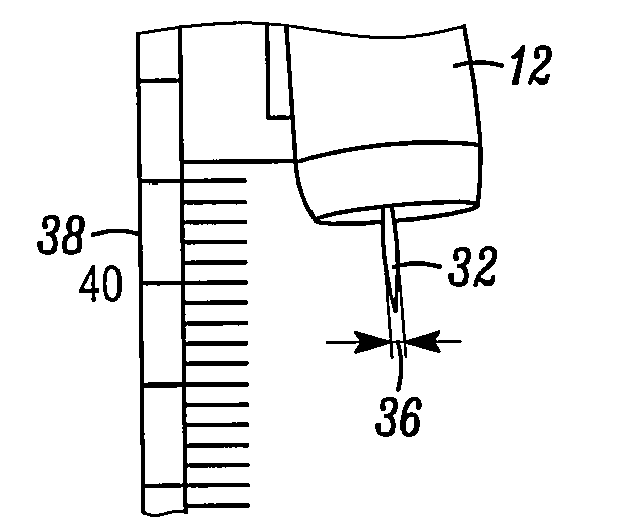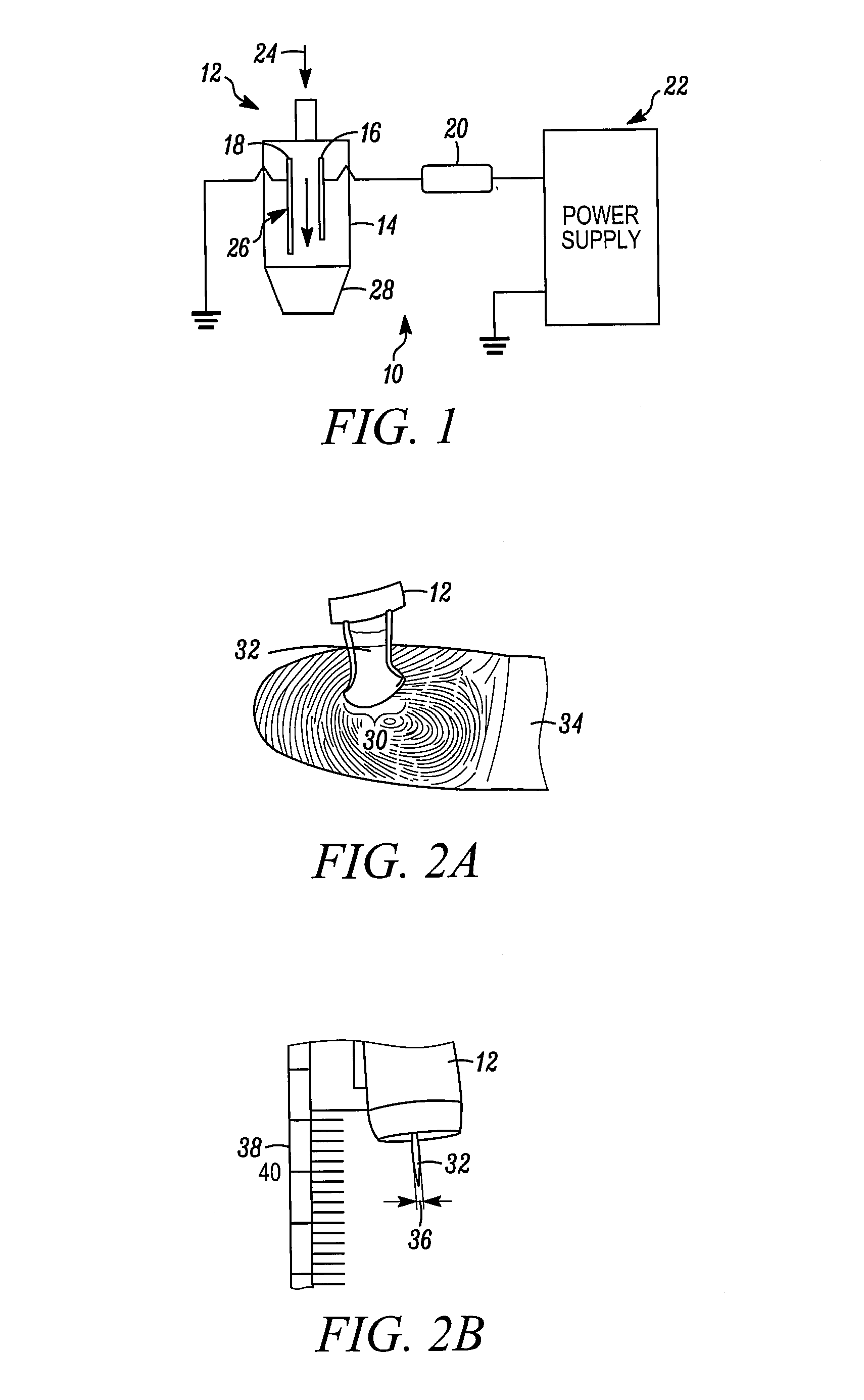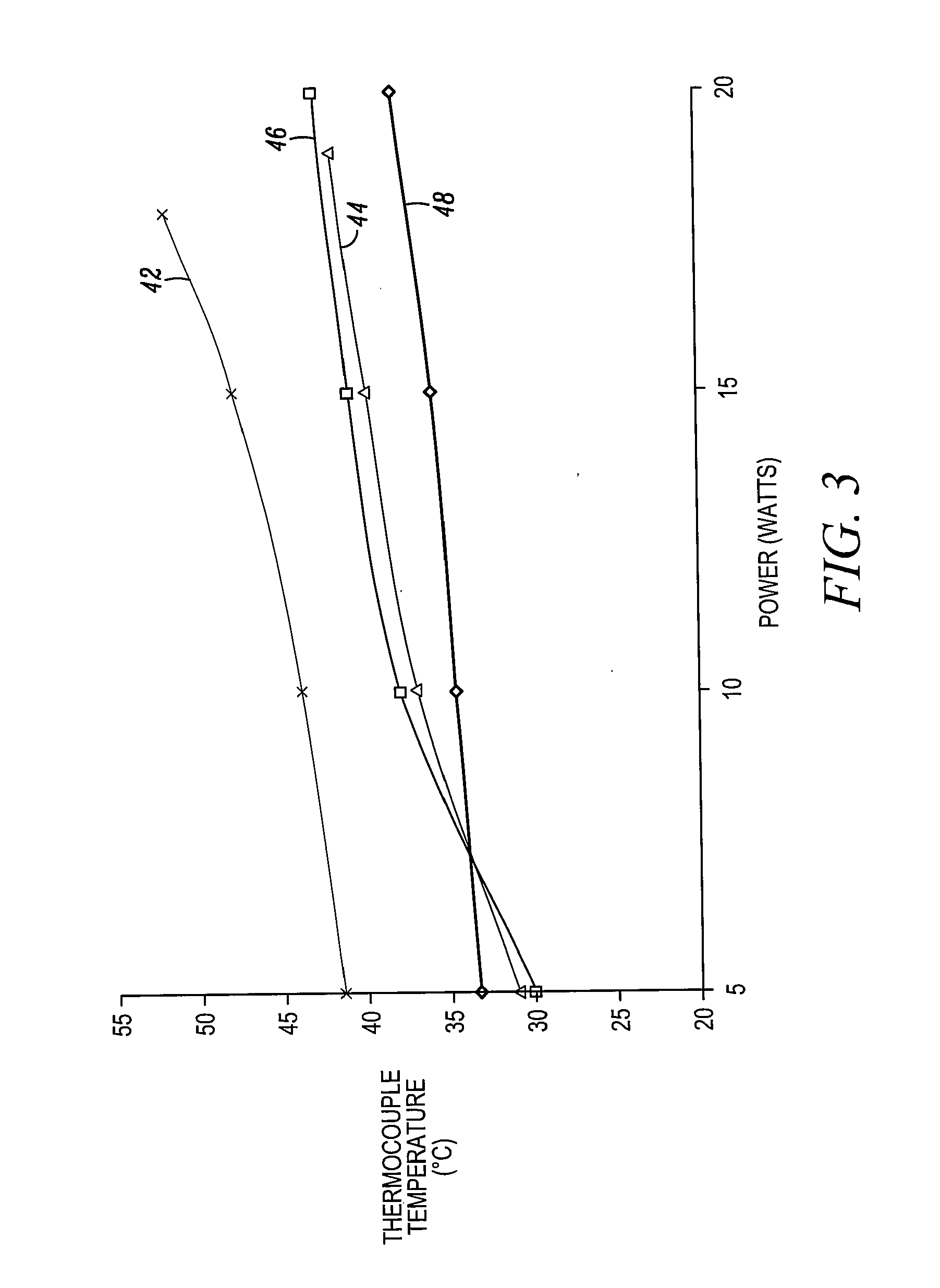Atmospheric Non-Thermal Gas Plasma Method for Dental Surface Treatment
a gas plasma and atmosphere technology, applied in plasma techniques, medical science, disinfection, etc., can solve the problems of high failure rate of fillings at these interfaces, accompanied by the presence of additional decay that needs removal, and the failure of enamel and dentin to protect the pulp, etc., to achieve the effect of strengthening the strength of the adhesive-site interfa
- Summary
- Abstract
- Description
- Claims
- Application Information
AI Technical Summary
Benefits of technology
Problems solved by technology
Method used
Image
Examples
example 1
[0054]An atmospheric cold plasma brush (ACPB), a non-thermal gas plasma source, was used to treat and prepare dentin surfaces for dental adhesive and dental composite application. Extracted unerupted human third molars were used for this investigation. The occlusal one-third of the crown was sectioned by means of a water-cooled low speed diamond saw (Buehler, Lake Bluff, Ill.). The exposed dentin surfaces were polished with 600 grit SiC sand papers under water and then etched using 36% phosphoric acid. Dentin surfaces were Ar plasma treated for 0, 30, 60, and 300 sec. A flow rate of 2500 sccm and a power of 5 watts were chosen. The results of these treatments are shown in FIG. 6. Oxygen additions at various flow rates were also tested. Adper Single Bond Plus dental adhesive (3M ESPE) and Filtek Z250 composite (3M ESPE) were applied and light cured as directed. Dentin / composite bars (8-10 mm×1 mm×1 mm) were cut from the prepared teeth for tensile testing and interface characterizatio...
example 2
[0056]SEM images shown in FIGS. 7(a)-(d) have been taken of the fracture surfaces that can be generated using methods of this disclosure. FIGS. 7(a)-(d) represent back scattered SEM images of the fracture surfaces of the test specimens prepared from: (a) the untreated controls (0 sec), (b) 30 sec, (c) 100 sec, and (d) 300 sec plasma treated dentin. The resulting SEM images showed that more composite remained on dentin surfaces plasma treated for 30 seconds when compared with controls. This illustrates that rather than the fissure occurring in the adhesive-dentin interface, the break occurs in the composite instead, showing that the adhesion of the interface is stronger than the internal strength of the composite.
[0057]Fracture modes were determined and recorded. Table 2 presents micro tensile test data and fracture location of the specimens prepared from plasma treated dentin and the untreated controls (0 sec treatment)
TABLE 2Treatment Time0 s30 sBonding StrengthAverage Stress (MPa)...
PUM
 Login to View More
Login to View More Abstract
Description
Claims
Application Information
 Login to View More
Login to View More - R&D
- Intellectual Property
- Life Sciences
- Materials
- Tech Scout
- Unparalleled Data Quality
- Higher Quality Content
- 60% Fewer Hallucinations
Browse by: Latest US Patents, China's latest patents, Technical Efficacy Thesaurus, Application Domain, Technology Topic, Popular Technical Reports.
© 2025 PatSnap. All rights reserved.Legal|Privacy policy|Modern Slavery Act Transparency Statement|Sitemap|About US| Contact US: help@patsnap.com



